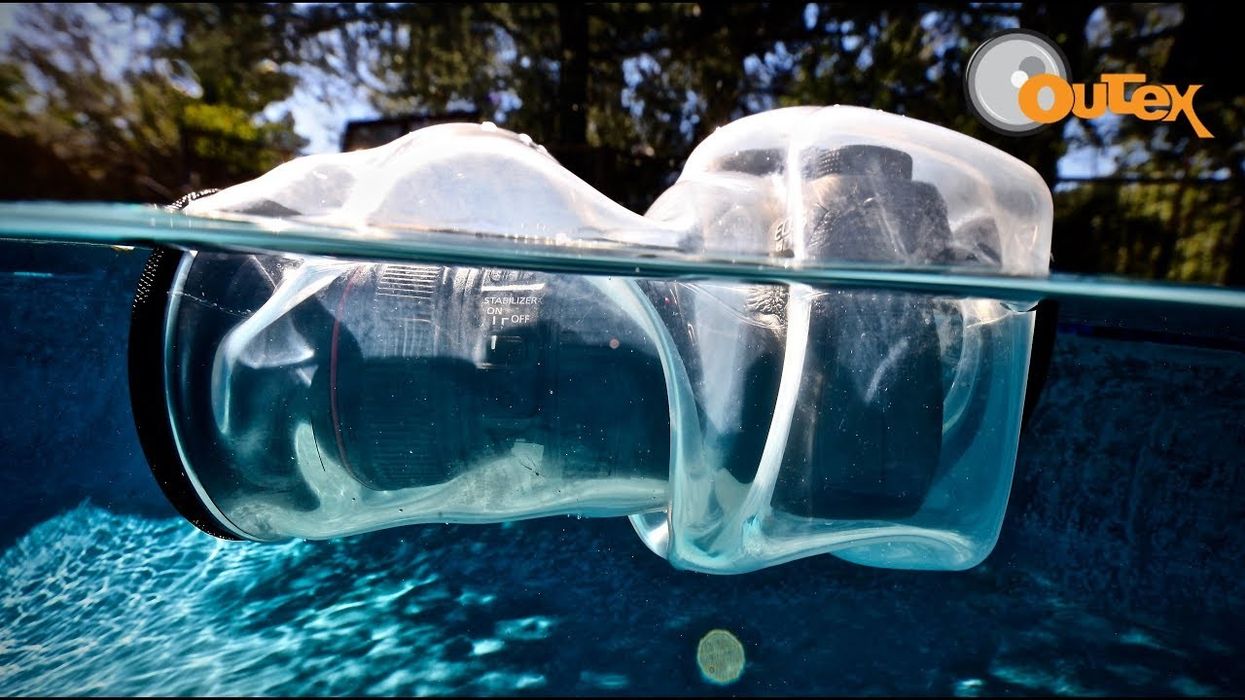Tips to Keep You and Your Camera From Drowning
Are you scared of your camera drowning while shooting underwater? We’ve got some tips to help you.

Submerging your camera underwater is terrifying. Any amount of water could ruin your camera. Sure, there is gear out there designed for specific cameras to keep your camera from any sort of water damage. The downside to most underwater camera housing is that it is bulky, heavy, and makes working with the camera a challenge.
The easiest way to film is by using a GoPro. It’s already waterproof, relatively inexpensive compared to a good camera, and gives you decent image quality.
But to step up your underwater footage game, you might try underwater housing. Check out this video from Potato Jet for more advice.
The underwater housing unit
This video highlights Outex,a durable and weightless option. The underwater housing unit is light and collapsable, which is perfect for any traveling filmmaker on the go. It will work with any camera and any lens attachment.
Getting the camera in the bag is a fairly simple process. First, make sure all of you have managed your settings before turning off your camera while leaving everything else on. Once your camera is prepped, slide the back of the bag over the camera lens until the lens reaches the opening on the other side. Then, screw on the lens filter to the built-in O-ring, and use the washers to confirm that the lens filter is tightened all the way.

Next, stretch the back of the bag over the rest of the camera. The material of the bag will be a bit tough to stretch and will take a little tough love to get over the camera. Once the camera is snuggly in the bag, tighten the rear glass plate to the back O-ring just like you did for the front.
When everything is done, it is time to check how secure the bag is with the float test. The float test sounds scary, but don’t worry, because it would take several seconds to a minute for any water damage to occur to the camera in the Outex bag. Place the camera in the housing unit in the water. If it floats, push the camera just below the surface. Check to see if any bubble streams are coming from the bag. If there are, retighten the rear glass and lens filter and test the housing unit again. Once there are no bubbles, you are ready to shoot.
Maintenance on the Outex is pretty simple. After an ocean shoot or filming anything where there is seawater, wipe down the housing unit with soap and water and let it dry in a cool place. Outex also sends you a supply of lubricant when you purchase a housing unit from them to keep the O-ring in pristine condition for as long as possible.

Tips for shooting underwater
The major perk of shooting in water is when you come up and need a place to put your camera, you can just let go and let the camera float. That being said, your camera could float away from you. To prevent that from happening, we highly recommend getting a strap that goes around your neck or wrist straps that attach to the camera.
The major difference when lighting a water shot compared to a normal shot is that lighting has to be placed far enough from the water for safety reasons.
You can place lighting around the body of water, on top of a structure to act as an overlight, or use the best free light out there: sunlight. There are a lot of different options when it comes to finding the best way to light a water shot, so be creative in how you approach this step.

Tips to keep you from floating to the surface
Do you know that natural reaction we all have to take a deep breath before we go underwater? Yeah, well, cut that out. When you fill up your lungs with air, you will have a harder time staying underwater without floating up to the surface.
Try to release the air in your lungs before dipping below the surface, but don’t empty your lungs completely. One of two things will happen. You will sink to the bottom, and there is a chance you could drown if you’re not careful. So please, on the behalf of your NFS family, don’t drown.
This is a skill that you should practice before going on any set to shoot an underwater scene. Just like any filmmaking skill, this one will take some time to master.

Even though this is a great option for an underwater housing unit for your camera, there might be some limitations such as audio quality that will make shooting a bit flawed. Currently, there are no perfect underwater housing units out there. Make sure to practice your underwater skills so you can get the best shot possible without damaging your camera or your lungs.
Do you have any tips for filmmakers who want to shoot underwater? Let us know what they are in the comments below!
Source: Potato Jet











